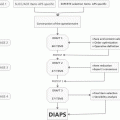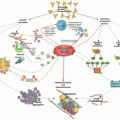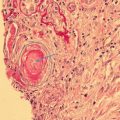Cardiovascular disease and venous thrombosis prevention
Screening for and aggressive management of conventional atherosclerosis risk factors
Screening for and elimination of venous thrombosis risk factors
Patient education
Primary thrombosis prevention
Low-dose aspirin in persistently moderate-to-high titer aPL-positive patients who have additional cardiovascular risk factors. No evidence that aspirin benefits the patients who do not have additional cardiovascular risk factors
No anticoagulation except if indicated for other conditions
Secondary thrombosis prevention
Warfarin with a target international normalized ratio (INR) of 2.0–3.0 for venous thrombosis
Warfarin with a target INR of 2.0–3.0 with consideration of low-dose aspirin for arterial thrombosis (the group acknowledges the fact that given the lack of strong data on arterial thrombosis, some centers prefer warfarin with a target INR of 3.0–4.0)
No use of direct oral anticoagulants until the results of the ongoing randomized clinical trials are available
Indefinite anticoagulation in aPL-positive patients with unprovoked thrombosis with continuous assessment of the bleeding risk.
Optimal therapy of patients with provoked venous thrombosis is unknown. Therapy for a minimum of 3 months and until the provoking risk factor is eliminated should be provided to all patients. Strong consideration of extended duration anticoagulation recommended for most patients except perhaps those identified to have a high risk of bleeding.
References
1.
2.
3.
4.
5.
Perez-Sanchez C, Barbarroja N, Messineo S, et al. Gene profiling reveals specific molecular pathways in the pathogenesis of atherosclerosis and cardiovascular disease in antiphospholipid syndrome, systemic lupus erythematosus and antiphospholipid syndrome with lupus. Ann Rheum Dis. 2015;74:1441–9.CrossRefPubMed
6.
Pérez-Sánchez C, Aguirre MA, Ruiz-Limón P, et al. Atherothrombosis-associated microRNAs in antiphospholipid syndrome and systemic lupus erythematosus patients. Sci Rep. 2016;6:31375.CrossRefPubMedPubMedCentral
7.
8.
Kiani AN, Vogel-Claussen J, Arbab-Zadeh A, Magder LS, Lima J, Petri M. Semiquantified noncalcified coronary plaque in systemic lupus erythematosus. J Rheumatol. 2012;39:2286–93.CrossRefPubMedPubMedCentral
9.
Magder LS, Petri M. Incidence of and risk factors for adverse cardiovascular events among patients with systemic lupus erythematosus. Am J Epidemiol. 2012;176:708–19.CrossRefPubMedPubMedCentral
Stay updated, free articles. Join our Telegram channel

Full access? Get Clinical Tree






